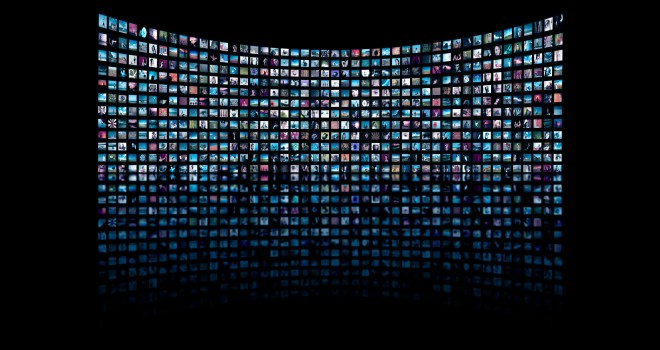
New Media and Islam
The importance of new media (YouTube and such), social networks (Facebook and such) and new tools that can be considered a little bit of both (Twitter and such) no longer needs any argumentation. Facebook is now the third largest “country” in the world, and YouTube and Twitter have redefined “communication.” In 2011, in particular, the whole world has seen the power and impact of these tools in various events and revolutions, and indeed a number of institutions have taken note and started to investigate the usage and effect of these tools in less visible areas, such as the discourse of religious people within their communities and in interfaith dialogues.
An example of the exploration of the effect of new media on the religious discourse within the Islamic community is the online conference titled “The Future of Islam in the Age of New Media” that Amir Ahmad (“an avid sociopolitical blogger” and “a digital media and marketing consultant”) organized in April. This online “conference” consisted of 60 speakers, who each spoke for one minute on the topic. The format itself speaks volumes on how “communication” is now conducted with these new tools. An example of the exploration of the effect of social networks on interfaith dialogue is the ninth Doha (Qatar) Interfaith Conference titled “Social Media and Inter-Religious Dialogue: A New Relationship,” which was organized in October.
In the second part of this column (to be posted soon), I will be summarizing and commenting on the main ideas which surfaced from these two conferences. But first, I would like to review the social and cognitive effects that the new technology and media have produced and religious reactions to this development.
Smartphones, computers and the Internet have produced addictions and dwindling attention spans among the youth: most children and students are now constantly prone to distraction and time waste, much more than TV did to our generation. Last November, an article in the New York Times told of a 14-year-old girl who exchanges an average of 900 texts a day. Youngsters’ brains are being altered, perhaps permanently, having gotten used to interactivity and immediate reaction/gratification (“I click and something happens”). Parents, schools and religious institutions are trying to cope.
In a previous column, I mentioned the usage of these new tools in the Islamic life: Twitter being used to send Quranic verses and religious injunctions; YouTube and Facebook being used to disseminate sermons and to proselytize; smartphone apps (e.g., iPray, iQuran, Find Mecca, Essentials of Ramadan, Ramadan Booster Pro) and finding the nearest mosque or halal restaurants in some cities. These applications have been developed to help Muslims live their religious lives more easily and more fully (“no excuse now…”). In that column, I warned against the dangers of peer pressure and of the commercialization of religion.
Using these tools for proselytization is well under way. Last July, the Financial Times ran a story titled “Saudi clerics tap into social networks,” relating how Sheikh Abdullah bin Jebreen, an important Saudi scholar, had amassed nearly 6,000 followers within weeks of joining Twitter. The amazing part was that Sheikh bin Jebreen died two years ago, at the age of 76; his students have revived his fatwas to reach a new generation through the new medium. The news story also told of Sheikh Salman Alodah, a former staunch conservative but now a self-declared reformist, who has 113,000 Twitter followers and almost half a million Facebook fans.
Not everyone is delighted with these new tools, which can obviously have significant impact on the religious lives of people and on the religious discourse that can be transmitted. On the communication level, important thinkers such as Noam Chomsky have recently decried Twitter as a “shallow” means of communication, which “erodes normal human relations.” Why? Because it “requires a very brief, concise form of thought … that tends toward superficiality…“
On the Muslim side, the important thinker Seyyed Hossein Nasr (in interviews with Muzaffar Iqbal published as a book a few years ago) criticized the cell phone (“a very good example” of the kind of negative effects that new technologies can have on our religious well-being): “[It] has really changed the space in which many human beings live. It destroys that inner quiet space where we are alone with God … [a] very profound effect upon the human soul.”
Similarly, the Los Angeles Times recently related the strong reactions expressed by some Iranian clerics and other opinion makers to the youth’s alarming addiction to the web. One cleric warned his students of the “dangers and temptations” of the Internet and advised them to “spend more time praying and less time clicking through cyberspace.” An opposing view, however, was expressed by “an activist and son of a well-known reformist cleric,” who saw no conflict between being a practicing Muslim and using Facebook and social networks; he insisted that “any practicing Muslim can embrace all kinds of modern tools and technology while maintaining his or her faith in Islam.”
Even Iran’s Supreme Leader, Ayatollah Khamanei, was called upon to issue a fatwa regarding the usage of Facebook; his decree was ambiguous or commonsensical (depending on one’s perspective and expectation): “In general if it requires engaging in [immorality and evil acts] (such as spreading corruption, lies, and false materials) or if there is concern that it is sinful, or it strengthens the enemies of Islam and Muslims, it is not permissible. Otherwise it’s fine.”
Clearly, the new digital tools are having a significant impact on the social and religious lives of people. In the next column, I will explore how these tools are affecting the religious discourse within the Islamic culture and in interfaith dialogues.
By Nidhal Guessoum, published in The Huffington Post, November 8th 2011.

